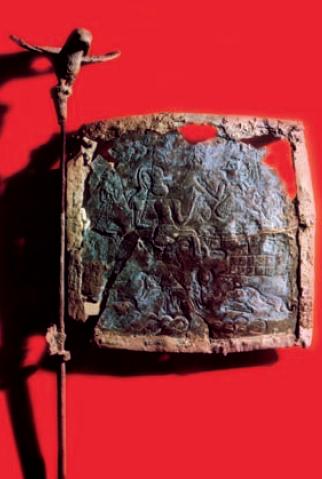Archaeological sites in Iran on:
[Wikipedia]
[Google]
[Amazon]
 Some of the
Some of the
{{DEFAULTSORT:Archaeological Sites In Iran Archaeological sites in Iran,
prehistoric
Prehistory, also known as pre-literary history, is the period of human history between the use of the first stone tools by hominins 3.3 million years ago and the beginning of recorded history with the invention of writing systems. The us ...
archaeological sites of Iran
Iran, officially the Islamic Republic of Iran, and also called Persia, is a country located in Western Asia. It is bordered by Iraq and Turkey to the west, by Azerbaijan and Armenia to the northwest, by the Caspian Sea and Turkmeni ...
are listed below:
*Paleolithic
The Paleolithic or Palaeolithic (), also called the Old Stone Age (from Greek: παλαιός '' palaios'', "old" and λίθος ''lithos'', "stone"), is a period in human prehistory that is distinguished by the original development of stone too ...
**Hotu and Kamarband Caves
The Hotu and Kamarband Caves or Belt Caves are prehistoric archaeological sites in Iran. They are located apart, in a cliff on the slopes of the Alborz mountains in the village of Toroujen (currently called Shahid Abad), south west of Behshahr.
...
** Darband Cave
** Qal'eh Bozi
** Do-Ashkaft Cave
** Warwasi
** Bisitun Cave
** Kashafrud
*Neolithic
The Neolithic period, or New Stone Age, is an Old World archaeological period and the final division of the Stone Age. It saw the Neolithic Revolution, a wide-ranging set of developments that appear to have arisen independently in several pa ...
** Tappeh Sialk
** Ganj Dareh
** Ali Kosh
** Hajji Firuz Tepe
Hajji Firuz Tepe is an archaeological site located in West Azarbaijan Province in north-western Iran and lies in the north-western part of the Zagros Mountains. The site was excavated between 1958 and 1968 by archaeologists from the University ...
* Jiroft culture (3rd millennium BC)
**Konar Sandal
Konar Sandal is a Bronze Age archaeological site, situated in the valley of the Halil River just south of Jiroft, Kermān Province, Iran.
Description
The site consists of two mounds a few kilometers apart, called Konar Sandal A and B with ...
** Shahdad
**Shahr-e Sukhteh
Shahr-e Sukhteh ( fa, شهر سوخته, meaning " heBurnt City"), c. 3200–2350 BCE,
also spelled as ''Shahr-e Sūkhté'' and ''Shahr-i Sōkhta'', is an archaeological site of a sizable Bronze Age urban settlement, associated with the Helmand ...
* Lullubi culture (3rd to 2nd millennia BC)
** Sarpol-e Zahab
* Elam (3rd to 2nd millennia BC)
** Anshan
** Chogha Zanbil
** Godin Tepe
** Haft Tepe
** Susa
Susa ( ; Middle elx, 𒀸𒋗𒊺𒂗, translit=Šušen; Middle and Neo- elx, 𒋢𒋢𒌦, translit=Šušun; Neo- Elamite and Achaemenid elx, 𒀸𒋗𒐼𒀭, translit=Šušán; Achaemenid elx, 𒀸𒋗𒐼, translit=Šušá; fa, شوش ...
** Khorramabad
*Assyria
Assyria ( Neo-Assyrian cuneiform: , romanized: ''māt Aššur''; syc, ܐܬܘܪ, ʾāthor) was a major ancient Mesopotamian civilization which existed as a city-state at times controlling regional territories in the indigenous lands of the A ...
** Tappeh Hasanlu
*Median
In statistics and probability theory, the median is the value separating the higher half from the lower half of a data sample, a population, or a probability distribution. For a data set, it may be thought of as "the middle" value. The basic f ...
to Achaemenid period
The Achaemenid Empire or Achaemenian Empire (; peo, 𐎧𐏁𐏂, , ), also called the First Persian Empire, was an ancient Iranian empire founded by Cyrus the Great in 550 BC. Based in Western Asia, it was contemporarily the largest em ...
**Ecbatana
Ecbatana ( peo, 𐏃𐎥𐎶𐎫𐎠𐎴 ''Hagmatāna'' or ''Haŋmatāna'', literally "the place of gathering" according to Darius I's inscription at Bisotun; Persian: هگمتانه; Middle Persian: 𐭠𐭧𐭬𐭲𐭠𐭭; Parthian: 𐭀� ...
** Persepolis
** Behistun
**Rey, Iran
Shahr-e Ray ( fa, شهر ری, ) or simply Ray (Shar e Ray; ) is the capital of Ray County in Tehran Province, Iran. Formerly a distinct city, it has now been absorbed into the metropolitan area of Greater Tehran as the 20th district of municip ...
**Pasargadae
Pasargadae (from Old Persian ''Pāθra-gadā'', "protective club" or "strong club"; Modern Persian: ''Pāsārgād'') was the capital of the Achaemenid Empire under Cyrus the Great (559–530 BC), who ordered its construction and the locatio ...
**Temukan
Temukan, also known as Tamouken, or Toukeh, Taokè as called by Greeks, is an ancient city in Iran, dating back to the Achaemenid era. It was discovered by archaeologists in April 2005 while conducting excavations at Borazjan in the Dashtesta ...
**Bābā Jān Tepe
Bābā Jān Tepe (Tappa), an archeological site in north-eastern Lorestan Province (34° north latitude, 47° 56’ east longitude), on the southern edge of the Delfān plain at approximately 10 km from Nūrābād, important primarily for ex ...
**Marlik
Marlik is an ancient site near Roudbar in Gilan, in northern Iran. Marlik, also known as ''Cheragh-Ali Tepe''D. Josiya Negahban Marlik is located in the valley of Gohar Rud (gem river), a tributary of Sepid Rud in Gilan Province in Northern I ...
** Qaleh Kesh
* Sassanid period
** Takht-e Soleymān
** Istakhr
** Great Wall of Gorgan
** Qal'eh Dokhtar
** Qumis, Iran
See also
* List of archaeological sites sorted by country * History of Iran * Rock art in IranReferences
External links
{{DEFAULTSORT:Archaeological Sites In Iran Archaeological sites in Iran,
Iran
Iran, officially the Islamic Republic of Iran, and also called Persia, is a country located in Western Asia. It is bordered by Iraq and Turkey to the west, by Azerbaijan and Armenia to the northwest, by the Caspian Sea and Turkmeni ...
archaeological sites